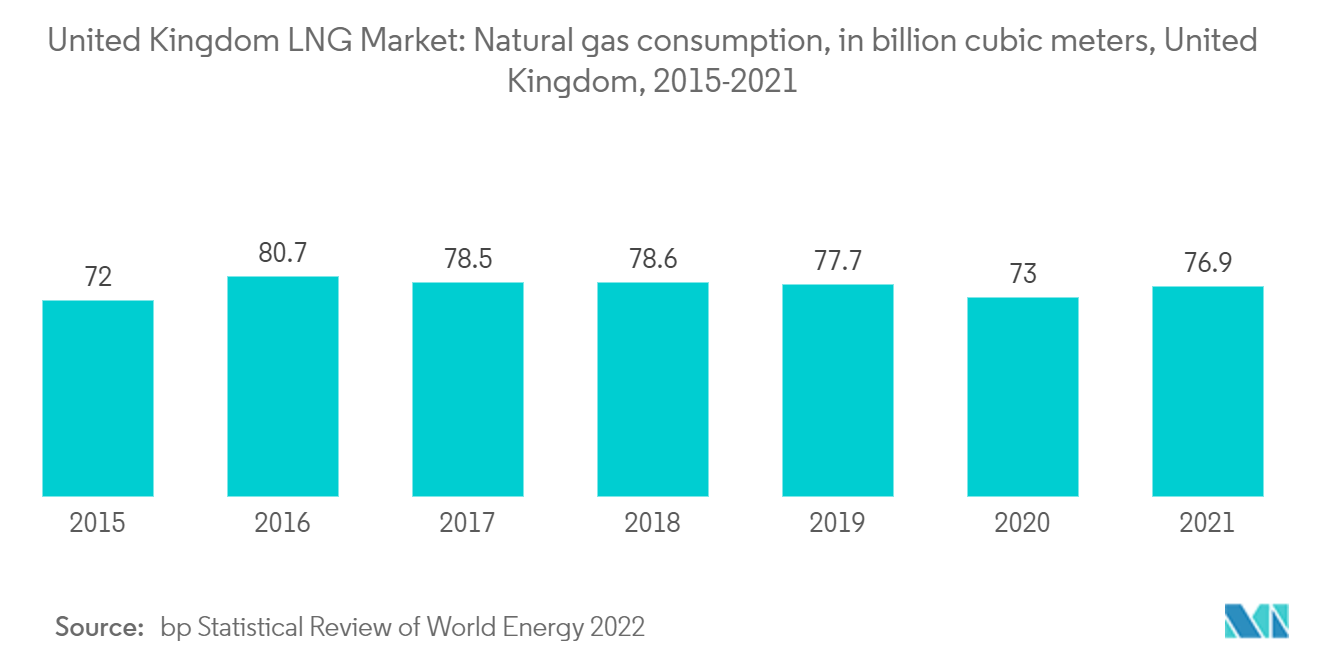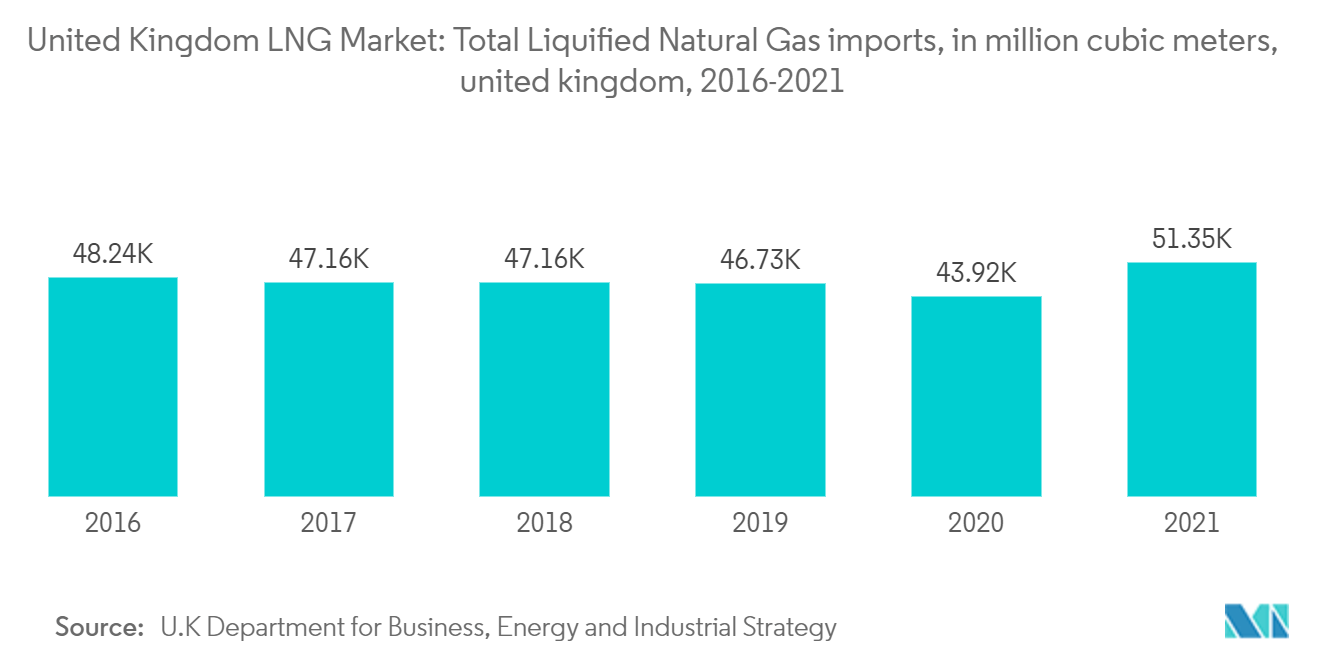Market Trends of United Kingdom LNG Industry
This section covers the major market trends shaping the UK LNG Market according to our research experts:
Transportation Segment to dominate the market during the forecast period.
- LNG represents a potential economic and environmental advantage over diesel and fuel oil for transportation fuels for automobiles, trucks, and ships.
- It is estimated that more than 700 commercial vehicles in the United Kingdom are powered by CNG (compressed natural gas) or LNG (liquefied natural gas).
- Gas vehicles are the best solution for road haulage and heavy vehicles. A joined-up strategy and investment in infrastructure will be required to maximize gas-powered vehicles' potential. The technology is ready, the UK has an extensive and world-class gas infrastructure, and it is simply the most appropriate solution for this industry.
- As the demand for LNG continues to grow in the haulage industry, particularly for long-haul vehicles, companies continue to invest in their LNG refueling network. Compared to conventional fuels such as diesel, LNG emits significantly less carbon dioxide and dramatically less dangerous particulates such as NOx and SOx.
- In June 2022, DHL Supply Chain UK introduced 20 bio-liquefied natural gas (LNG) trucks to the Marks & Spencer fleet, replacing 20 diesel vehicles. The new vehicles will reduce carbon emissions by approximately 80% when fuelled with bio-LNG and 10-20% when fuelled with fossil gas. Replacing 20 diesel trucks with bio-LNG will reduce carbon emissions in the M&S fleet by approximately 2,200 tons a year.
- Considering the LNG demand from transportation leads to more natural gas consumption in the country, according to the BP Statistical Review of World Energy, the total consumption increased from 72 billion cubic meters in 2015 to about 76.90 billion cubic meters in 2021.
- Therefore, based on the above-mentioned factors, the transportation sector is expected to dominate the United Kingdom LNG market during the forecast period.

Increasing import volume of liquefied natural gas (LNG) to drive the market
- In the United Kingdom, there is an existing infrastructure of LNG, and it is expected to grow as the country is dependent on LNG imports for heating and electricity purposes, the price competitiveness of LNG compared to other fuels, and low carbon emission associated with natural gas.
- In the United Kingdom, LNG has gained significant momentum in recent years. The Isle of Grain LNG terminal was the first LNG receiving terminal in the country to offer LNG reloading services in 2015 and subsequently launched a consultation to offer small-scale ship reloading. Transportation of LNG through trucks has also gained significant momentum in the country in recent years.
- However, the trade of liquefied natural gas increased drastically from North America and the Middle East after the Ukraine and Russia wars, as the wars banned imports from Russia. It further lowered the total recording imports. According to the United Kingdom's Department for Business, Energy and Industrial Strategy, the total imports increased from 48,243.05 million cubic meters in 2016 to about 51,350 million cubic meters in 2021.
- Furthermore, this increased the demand for LNG trucks to transport LNG from receiving terminals to various end-users. For instance, according to the International Group of Liquefied Natural Gas Importers (GIIGNL), the truck loading of LNG increased from 87,542 cubic meters in 2020 to about 130,605 cubic meters in 2021.
- In November 2022, Qatar is investing millions of pounds in the expansion of a significant gas terminal in Wales, which is becoming increasingly dependent upon imports of liquefied fuel from abroad as it becomes more dependent on imports of liquefied fuel. In order to accommodate 25% more liquefied natural gas (LNG) imports from around the world, Qatar is upgrading its import facility located on the south coast of Wales.
- Overall, the growing imports of LNG will likely boost LNG business in the United Kingdom during the study period.


